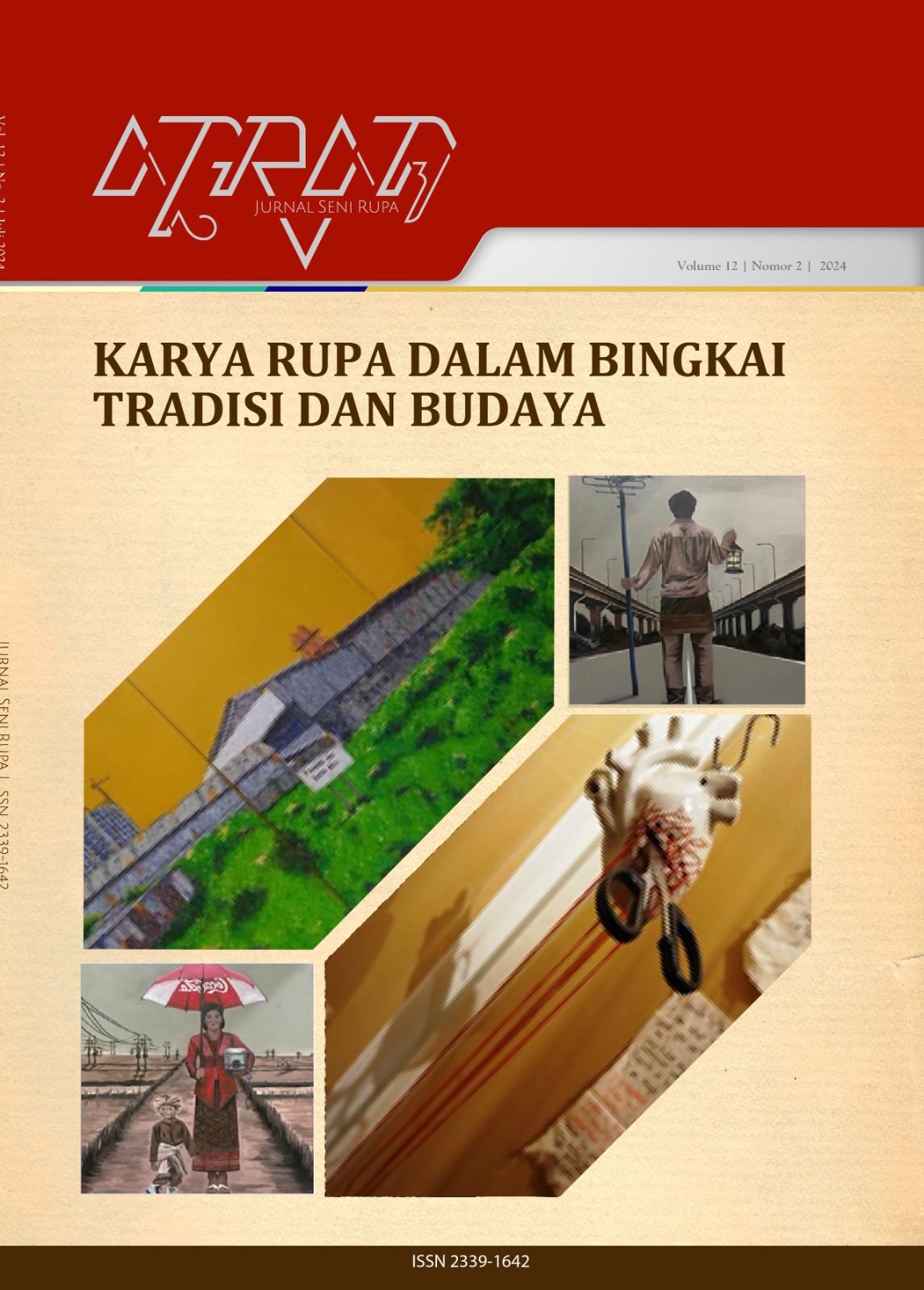Product Market Fit Material Serat Rami Sebagai Elemen Material Berkelanjutan Pada Penerapan Desain Furniture
DOI:
https://doi.org/10.26742/atrat.v12i2.3573Keywords:
Furniture, Ramie Fiber, SustainableAbstract
The proliferation of research and applications of sustainable materials within society has seen a notable increase, leading to constant updates in product segments featuring sustainable materials. This trend is further supported by the growing awareness among the public regarding environmental degradation. Ramie fiber is one such sustainable material serving as an alternative to the dependence on cotton materials in the textile industry. Collaborating with Armonie Ronche from Universitas Padjajaran, the author undertook a series of processes to implement ramie fiber in a furniture product, emphasizing the creation of products with good market value. Over a period of four months, the development process resulted in a living room set where a combination of hemp fiber and teak wood served as the primary elements in the design, globally marketable, and modern Jengki-style furniture.
References
[1] A. Kremensas, S. Vaitkus, S. Vėjelis, S. Członka, and A. Kairytė, “Hemp shivs and corn-starch-based biocomposite boards for furniture industry: Improvement of water resistance and reaction to fire,” Industrial Crops and Products, vol. 166, p. 113477, Aug. 2021. doi:10.1016/j.indcrop.2021.113477
[2] E. Novarini and M. D. Sukardan, “POTENSI Serat Rami (Boehmeria Nivea S. Gaud) Sebagai Bahan baku industri tekstil Dan Produk Tekstil Dan Tekstil Teknik,” Arena Tekstil, vol. 30, no. 2, Dec. 2015. doi:10.31266/at.v30i2.1984
[3] A. P. Wulandari, J. Kusmoro, and E. E. Ernawati, “Standardization of chemical degumming and biodegumming of ramie fiber processing for natural fiber supply chain strategy as a source of textile raw materials in Indonesia,” IOP Conference Series: Earth and Environmental Science, vol. 1211, no. 1, p. 012008, Jul. 2023. doi:10.1088/1755-1315/1211/1/012008
[4] “Product-market fit,” What is Product-Market Fit? | Definition and Examples, https://www.productplan.com/glossary/product-market-fit/#:~:text=Product%2Dmarket%20fit%20describes%20a,that%20product%27s%20growth%20and%20profitability (accessed Apr. 26, 2024).
[5] R. F. Dam. “The 5 Stages in the Design Thinking Process” Interaction Design Foundation - IxDF. https://www.interaction-design.org/literature/article/5-stages-in-the-design-thinking-process (accessed April. 22, 2024).
[6] D. Olsen, The Lean Product Playbook: How to Innovate with Minimum Viable Products and Rapid Customer Feedback. Hoboken, NJ: John Wiley & Sons, Inc., 2015.
[7] D. Kirana and N. Saputra, “Perancangan Elemen Interior dengan Material Berkelanjutan Berbasis Tali Putri (Cuscuta Australis) sebagai Pengganti Plastik”, JDI, vol. 6, no. 1, pp. 1-14, Jan. 2024.
[8] P. Salura, S. Clarissa, and R. Christophori Lake, “Reflecting the spirit of modern-Indonesia through architecture: The Icono-symbolical meanings of Jengki architectural style case studies: Bandung Polytechnic of Health Building and bumi sangkuriang meeting hall in Bandung, West Java, Indonesia,” Journal of Design and Built Environment, vol. 20, no. 2, pp. 13–26, Aug. 2020. doi:10.22452/jdbe.vol20no2.2
[9] Zahra Ramdini and Andry Masri, “Designing a Corncob Coffee Table By Utilizing the Physical Characteristics of Corncobs,” JDI., vol. 4, no. 2, Sep. 2022, doi: 10.52265/jdi.v4i1.198.
Downloads
Published
How to Cite
Issue
Section
Citation Check
License
Copyright (c) 2024 Nahja Akbar Khalid

This work is licensed under a Creative Commons Attribution 4.0 International License.
The Authors submitting a manuscript do so on the understanding that if accepted for publication, copyright of the article shall be assigned to jurnal Atrat and Jurusan Seni Rupa STSI Bandung as the publisher of the journal. Copyright encompasses rights to reproduce and deliver the article in all form and media, including reprints, photographs, microfilms, and any other similar reproductions, as well as translations.
Jurnal Atrat and the Editors make every effort to ensure that no wrong or misleading data, opinions or statements be published in the journal. In any way, the contents of the articles and advertisements published in jurnal Atrat are the sole and exclusive responsibility of their respective authors and advertisers.
The Copyright Transfer Form can be downloaded here: [Copyright Transfer Form JTSiskom]. The copyright form should be signed originally and send to the Editorial Office in the form of original mail, scanned document or fax :
Agus Cahyana (Editor-in-Chief)
Editorial Office of Jurnal Atrat
Department of fine art and design. ISBI Bandung
Jl. Buah Batu 212
Email: jurnalatrat@gmail.com








